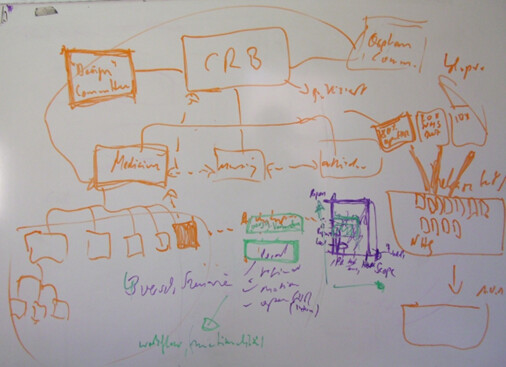@Pete_Bouvier
Many congratulations to everyone involved – what a journey (or shall I say: rollercoaster ride) it has been so far!
Even more so, it is truly amazing to see CKM’s global reach today - spanning 120 countries worldwide. For a bit of context, the recent MedInfo conference welcomed delegates from 63 countries.
This work is laying the foundations for a digital health ecosystem, globally — tackling many challenges along the way with few resources, but a lot of commitment to get there and a strong belief that this is needed.
Back then (around 2007), one of the major challenges we faced was the lack of visibility of what openEHR has to offer.
The early openEHR specifications were available, and we had a prototype of the Archetype Editor — but that was about it.
It may sound trivial today (at least to the openEHR community), but the breakthrough was this realisation that we didn’t need to keep reinventing the wheel.
That instead, clinical models need to be developed and managed so that they can be reused and shared as widely as possible - across organisations, health systems and countries.
This is assuming they are modelled comprehensively, are of high quality and ideally reviewed by clinicians from around the world.
This realisation has driven us to focus on the problem of how to actually govern these models effectively and make them easily available and ‘clinician-friendly’ – trying to hide the technical details or present them in a way that does not require an in-depth knowledge of openEHR to understand the clinical side of the models.
Making archetypes publicly available and presenting them in a clinician-friendly way has given broader visibility to the openEHR approach as a whole and has been, I believe, a key enabler for what openEHR is today.
In all this, you cannot overestimate the contributions and support of the following persons: Dr Heather Leslie, Dr Ian McNicoll, Dr Sam Heard, Thomas Beale, Dr Rong Chen (for the Java Reference Implementation!) and Prof Evelyn Hovenga!
Finally, if you want something to laugh at for the weekend:
This is a photo I took of the very first idea for CKM as far as I remember, sketched on a whiteboard - probably taken in early 2007.
I never took such pictures, and I don’t think my mobile even had a camera at the time. But for some reason, I had a real camera with me that day - I think it was because William Goossen visited us at Austin Health in Melbourne. I must have known we were on to something that day, so I took this picture.
Anyway, you can see we came up with the idea of a CRB – I think Clinical Review Board – responsible for the overall governance.
And an Orphan Committee for orphaned archetypes in need of a home. Plus A LOT of committees, organised along professions and clinical specialities. These committees have evolved into more flexible CKM teams and later into CKM Projects and Incubators.
And you can even see a 1.0.1 Sem Ver making a first appearance at the bottom right.
For all I got wrong - at least I chose nearly the right colours for an openEHR branding…!
Now - on to the next 4000 registrants and the remaining countries! 
![]() This is all the more remarkable given that growth has come largely through word of mouth.
This is all the more remarkable given that growth has come largely through word of mouth.![]()
![]()
